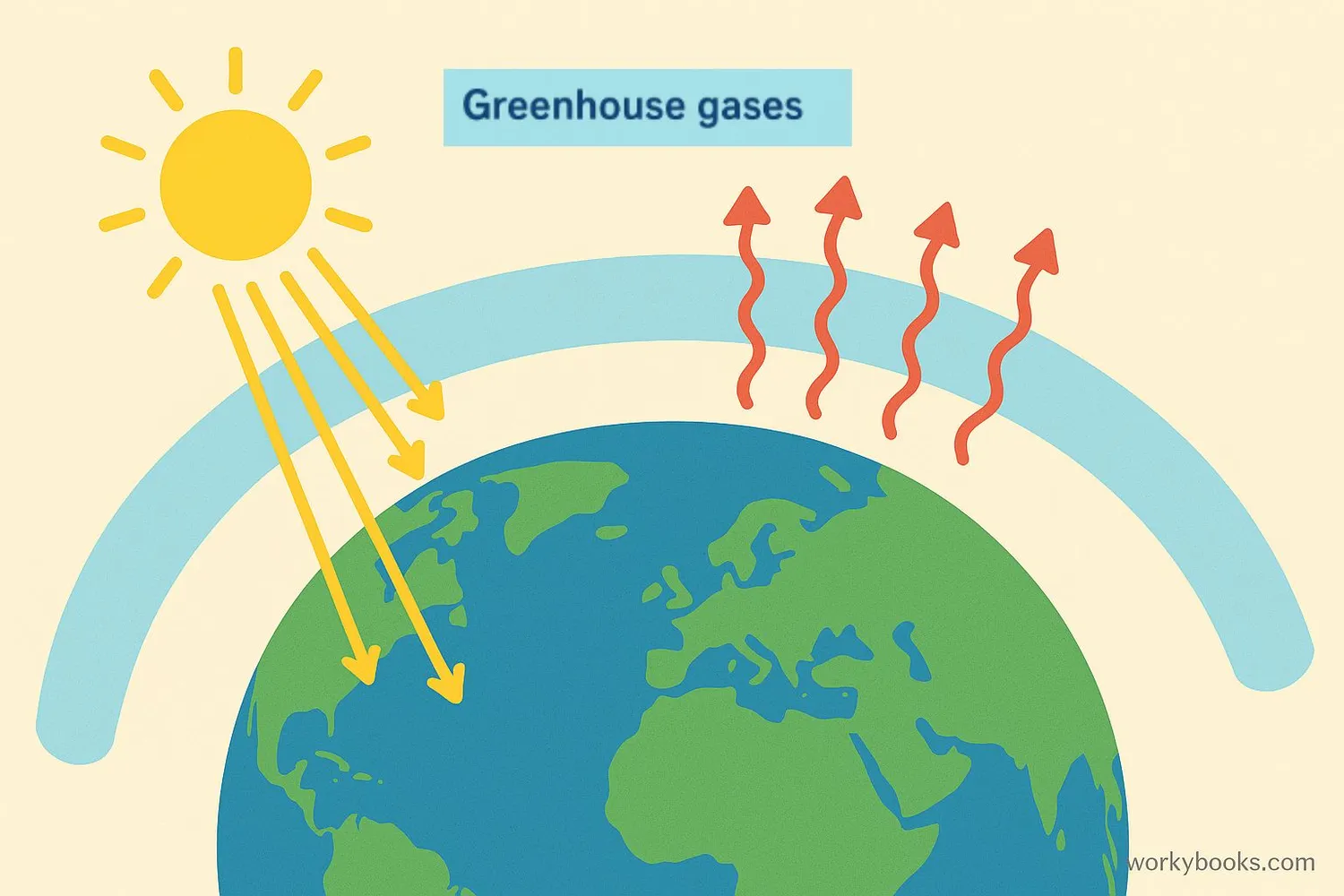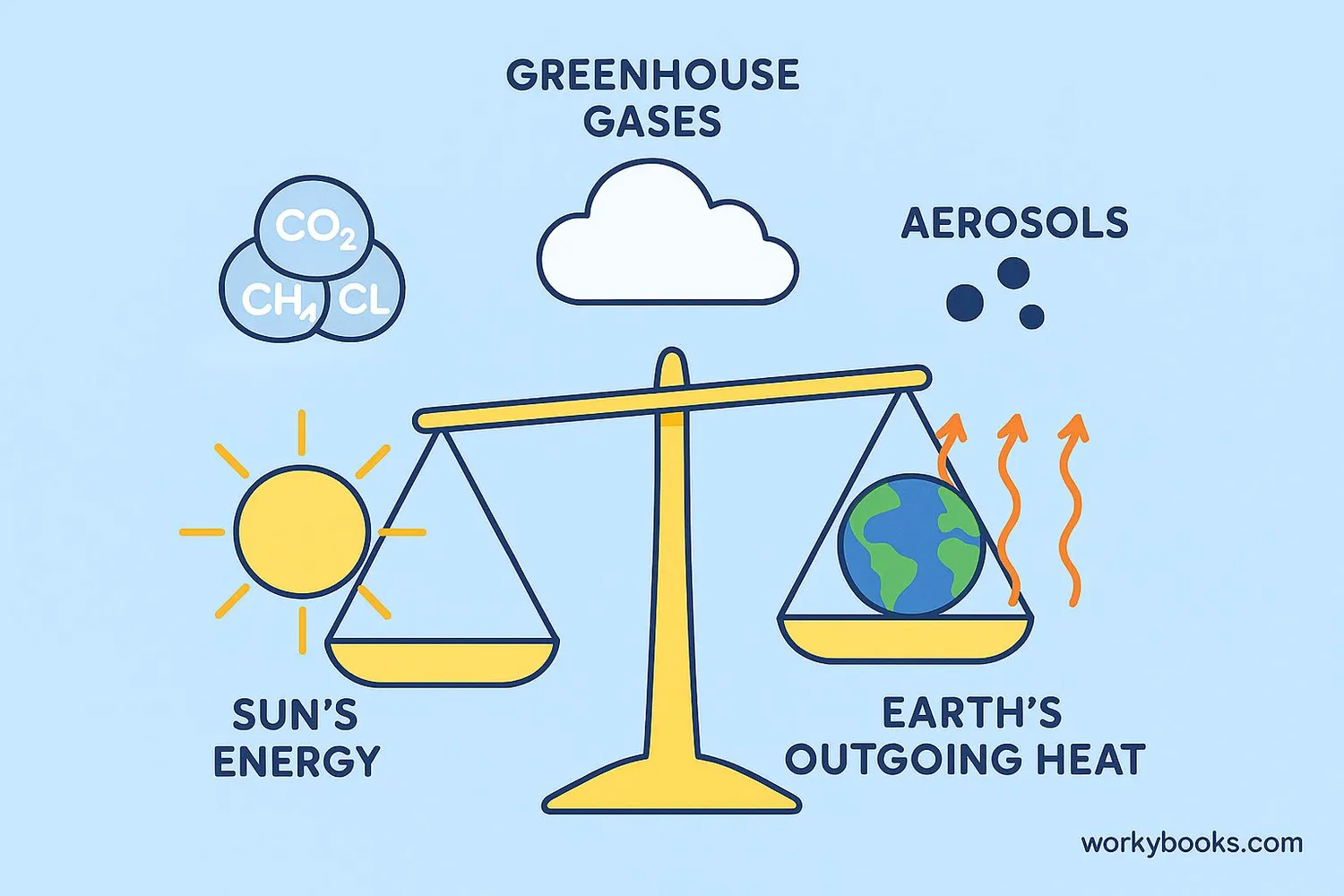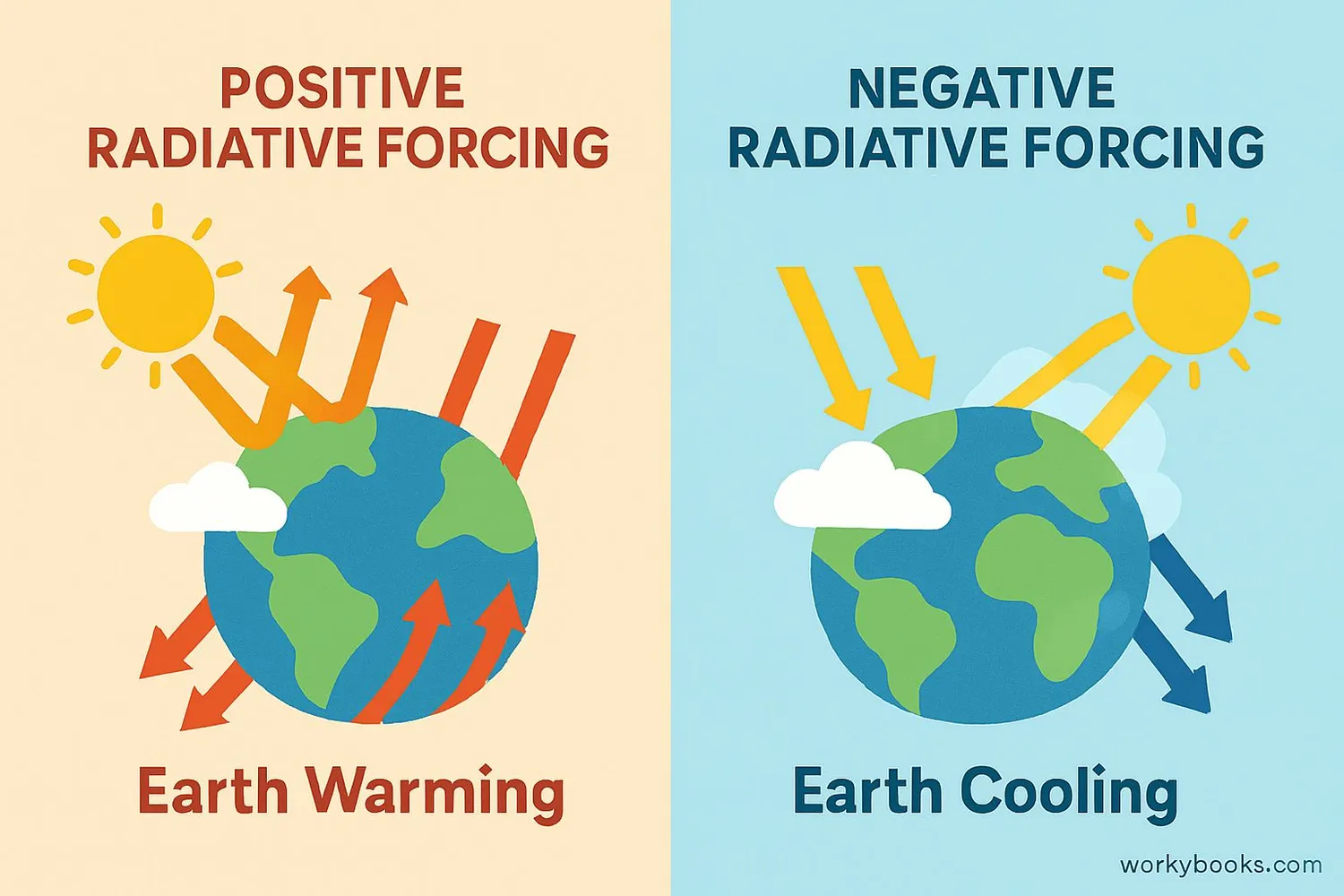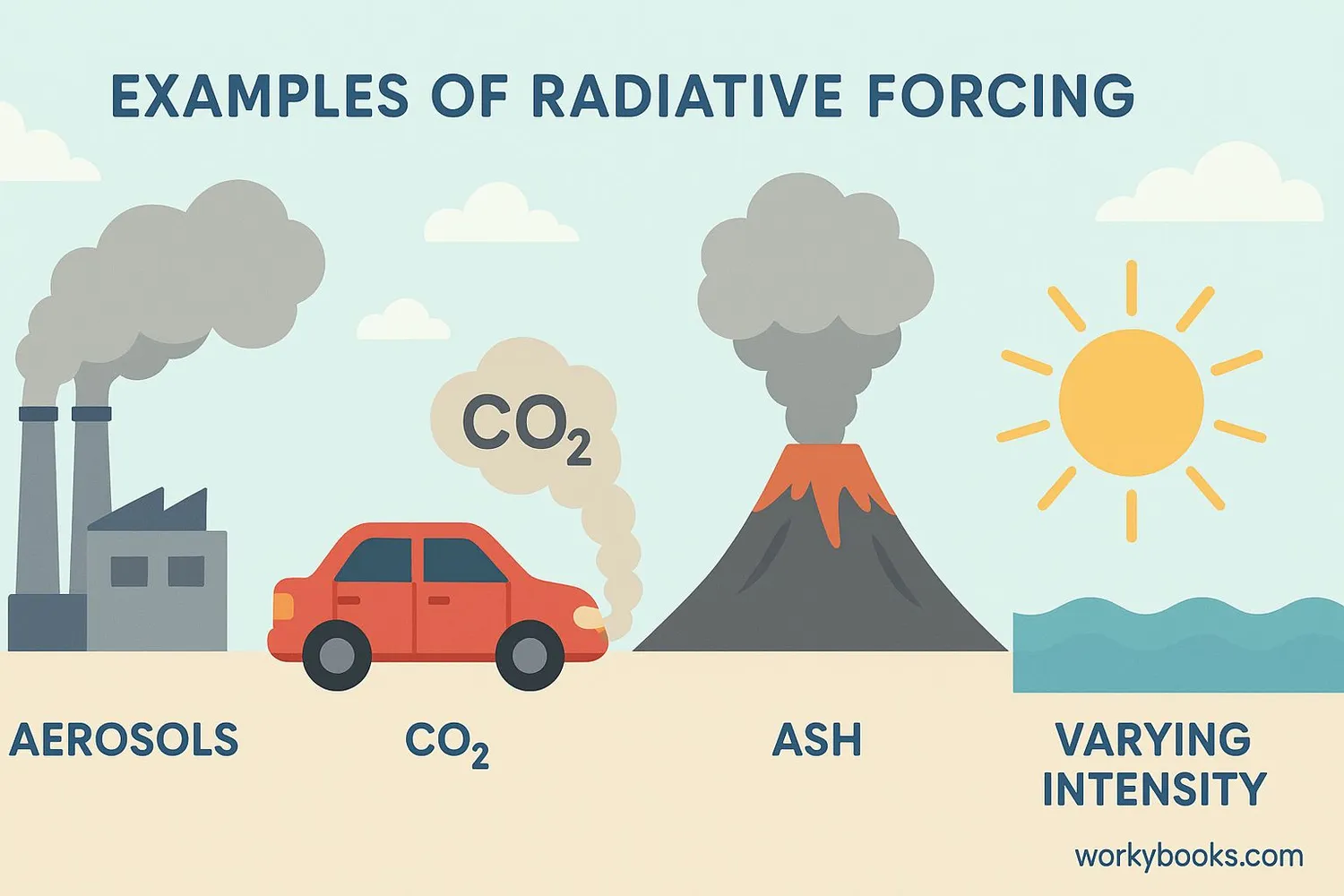Radiative Forcing - Definition, Examples, Quiz, FAQ, Trivia
Understanding Earth's Energy Balance and Climate Change
What is Radiative Forcing?

Radiative forcing is a scientific way to measure how different factors change Earth's energy balance. Think of it like a energy scale for our planet!
When the amount of energy coming into Earth from the Sun is different from the amount of energy going out into space, we have radiative forcing. If more energy comes in than goes out, Earth gets warmer. If more energy goes out than comes in, Earth gets cooler.
Science Fact!
Radiative forcing is measured in watts per square meter (W/m²), which tells us how much extra energy is being added to each square meter of Earth's surface.
How Radiative Forcing Works

Our planet is constantly balancing energy from the Sun with energy it releases back into space. This balance determines Earth's temperature. Different factors can force this balance to change:
Solar Energy
Sunlight brings energy to Earth
Energy Absorption
Earth absorbs some energy as heat
Energy Reflection
Some energy is reflected back to space
Greenhouse Effect
Some heat is trapped by gases in the atmosphere
Balance Change
Forcings change the balance between incoming and outgoing energy
Scientists use this simple formula to calculate radiative forcing:
RF = (Energy In) - (Energy Out)
When RF is positive, Earth warms up. When RF is negative, Earth cools down.
Positive & Negative Radiative Forcing

Radiative forcing can be either positive or negative, depending on whether it causes warming or cooling:
Positive Forcing
Traps more heat, warming the Earth. Examples: greenhouse gases, black carbon on snow
Negative Forcing
Reflects more sunlight, cooling the Earth. Examples: aerosols, some clouds
The climate changes we experience depend on the net radiative forcing - the sum of all positive and negative forcings. Currently, positive forcings are stronger than negative ones, which is why Earth is warming.
Examples of Radiative Forcing

Many different factors can cause radiative forcing. Here are some important examples:
Greenhouse Gases
CO₂, methane, and other gases trap heat (positive forcing)
Aerosols
Tiny particles from pollution that reflect sunlight (negative forcing)
Cloud Changes
Some clouds trap heat, others reflect sunlight (varies)
Land Use Changes
Deforestation or urbanization changes reflectivity
Solar Changes
Variations in the Sun's energy output
Among these, increased greenhouse gases from human activities are currently the largest contributor to positive radiative forcing and climate change.
Did You Know?
Carbon dioxide (CO₂) contributes about 1.7 W/m² of radiative forcing, which is more than any other human-related factor.
Radiative Forcing Quiz
Test your knowledge with this quiz! Answer all 5 questions to see how much you've learned about radiative forcing.
Frequently Asked Questions
Here are answers to some common questions about radiative forcing:
Science Facts About Radiative Forcing
Discover some fascinating facts about radiative forcing and Earth's energy balance!
Energy Measurement
The total radiative forcing from human activities is about 2.7 W/m². That's equivalent to having two small Christmas tree lights shining on every square meter of Earth's surface!
Volcanic Effects
The 1991 eruption of Mount Pinatubo released so much ash and sulfur dioxide into the atmosphere that it caused negative radiative forcing of about -4 W/m², temporarily cooling Earth by 0.5°C!
Ice-Albedo Feedback
Melting ice creates positive radiative forcing because white ice reflects sunlight, while darker ocean water absorbs it. This is one reason why the Arctic is warming faster than other regions.
Historical Context
The concept of radiative forcing was developed in the 1970s and 1980s as scientists worked to understand how different factors affect Earth's climate system and to compare their impacts.





